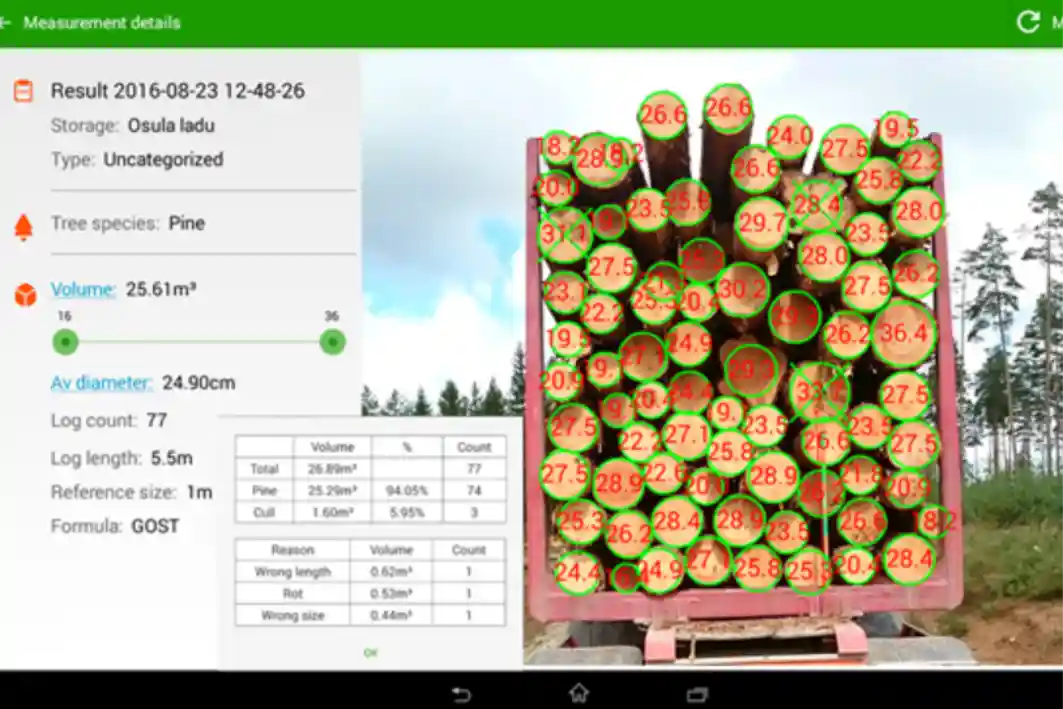There are multiple ways on how to measure timber on trucks. Our team provides an overview of the different options so users can choose which is the most suitable for your process. Timbeter has 4 different measurement options available: diameter, truck, pile, and density. It is important to understand the differences and determine the right option for you.
Timbeter has a field of the license plate/shipment number when making measurements. Thus, it is easy to filter and find the required data by license plate number. For example, users can categorize all the measurements made from the trucks arriving as either “Incoming“ and loaded to containers as “Outgoing.” This helps to monitor the timber in the stocks.
1. Measuring the diameters of the logs in the pack: diameter measurement
If you have one pack on the truck, then you can easily check the diameter measurement regime that helps you count the number of logs, the diameter of each log, and calculate the volume. Users will need to take a picture from the back of the truck. Then, you can also mark the logs that have a defect. In case you have 2 packs on the truck then it would be convenient to park the truck so that you can take pictures from both packs.
When you have short logs then there’s also an option to measure from aside. With just one photo there is the required data and in case you need to provide proof, digital data is easily shareable.
2. Pulp-and fuelwood: density measurement + truck measurement
For pulp and fuelwood measurement you determine the density coefficient as a first step. Typically this pile density coefficient/air filling factor is just assessed via visual observation but Timbeter provides a transparent, objective result that helps to avoid any possible disputes.
As a second step, you can use the determined coefficient to calculate the volume of each pack. You will need to use the truck measurement regime from the side of the truck. You should mark the heights of each pack. An option is also to use the fixed density coefficient to calculate the volume of each pack.
Also, Timbeter has the loading tool that helps users to select a certain amount of logs from an estimated volume – read about this feature more from here.
Hopefully, you got the information the helps you to understand what measurement regime to use in different cases.
